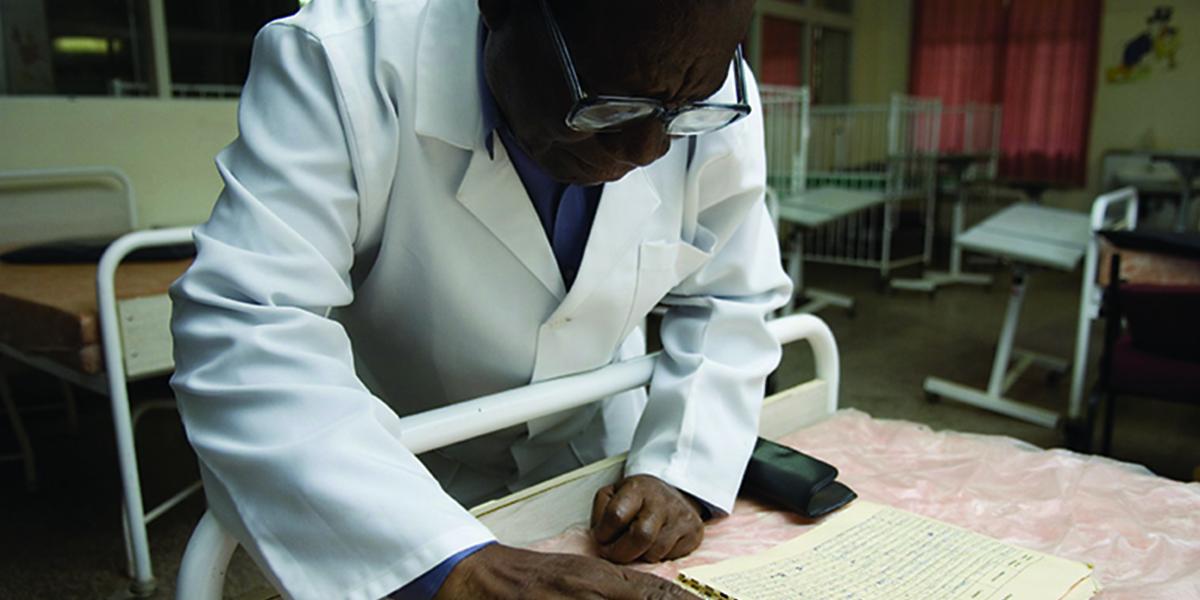A Great Campaign, Then What?
A 2003 measles immunization campaign in Zambia was a success, but the measles virus is far from being eradicated.
On a January afternoon at the University Teaching Hospital in Lusaka, Zambia, Makasa opens a door labeled "IS - 21 WARD (MEASLES)." The clinician surveys the dozen empty cribs and beds and recalls what it was like a few years back. "This ward used to be filled," he says. Then, pointing to three more rooms, he adds: "That ward used to be filled. And that used to be filled and that used to be filled. It was terrible."
Since the June 13, 2003, measles immunization campaign in Zambia, Makasa has seen just a few measles cases each month. Reported measles deaths in Zambia fell from about 250 in 2001 to 3 in 2004. (An Africa-wide emphasis on measles vaccination has more than halved measles deaths in recent years.)
However, the measles virus is far from being eradicated in Zambia, caution Diane Griffin, chair of the Bloomberg School's Department of Molecular Microbiology and Immunology (MMI), and William Moss, an Epidemiology assistant professor. Without another national campaign, measles cases are likely to creep back up in the near future. The only question is whether a new outbreak will be sparked by measles strains that are still lingering in the country or by new ones imported from elsewhere, say Griffin and Moss, who have been researching measles in Zambia since 1998. While following any new measles cases that come to the University Teaching Hospital, they are also continuing their research with colleagues in Lusaka.
Griffin has long been working on a new measles vaccine. The current vaccine's limitation is that it is only effective if given to children after they are nine months old (before that age, maternal antibodies reduce the vaccine's effectiveness). To eliminate this window of vulnerability, Griffin's vaccines aim to be effective when given soon after birth. "We're very hopeful," says Griffin, MD, PhD. "Two of the vaccines we're working on look terrific." Griffin hopes the new vaccines, based on genes from the measles virus (rather than the entire virus), will be ready for human testing in two to three years.
Meanwhile, Moss is focusing on how HIV and antiretroviral (ARV) therapy affect measles. It's an important question in a country like Zambia where there are an estimated 85,000 HIV-positive children and adult HIV prevalence is 16.5 percent. "There is an increasing number of children getting ARVs. The next question is how does ARV therapy alter the immune response to measles," says Moss, MD, MPH.
For children who have been vaccinated, Moss offers the following hypothesis: As HIV progresses, it drastically reduces the immune system's infection-fighting CD4 cells, including ones that recognize measles virus antigens. Once HIV-infected children begin taking ARVs, their CD4 cells increase, but the new CD4s offer no protective immunity against measles because they haven't seen measles virus antigens before. "What I think could happen is that as ARV therapy is widely introduced in sub-Saharan Africa, these children will live longer but remain susceptible to measles," says Moss. "That scenario will allow a pool of susceptible children to build up. My sense is that as countries like Zambia put more and more children on ARV therapy, the children are going to need to be revaccinated against measles."
